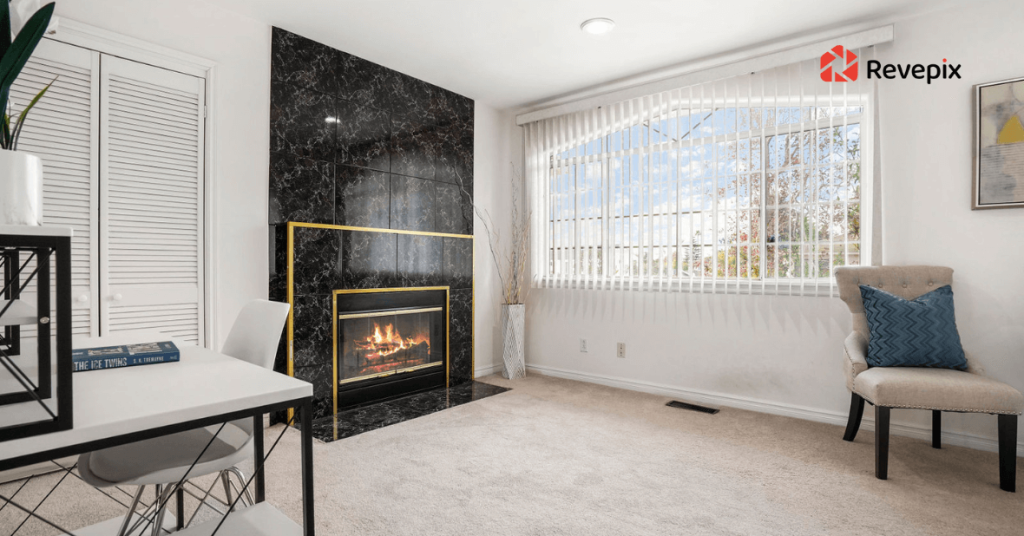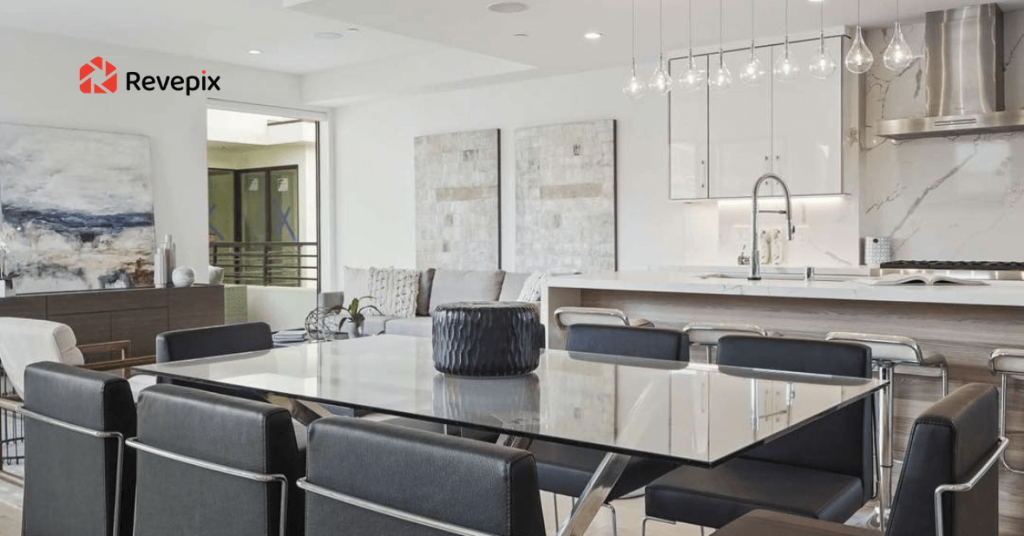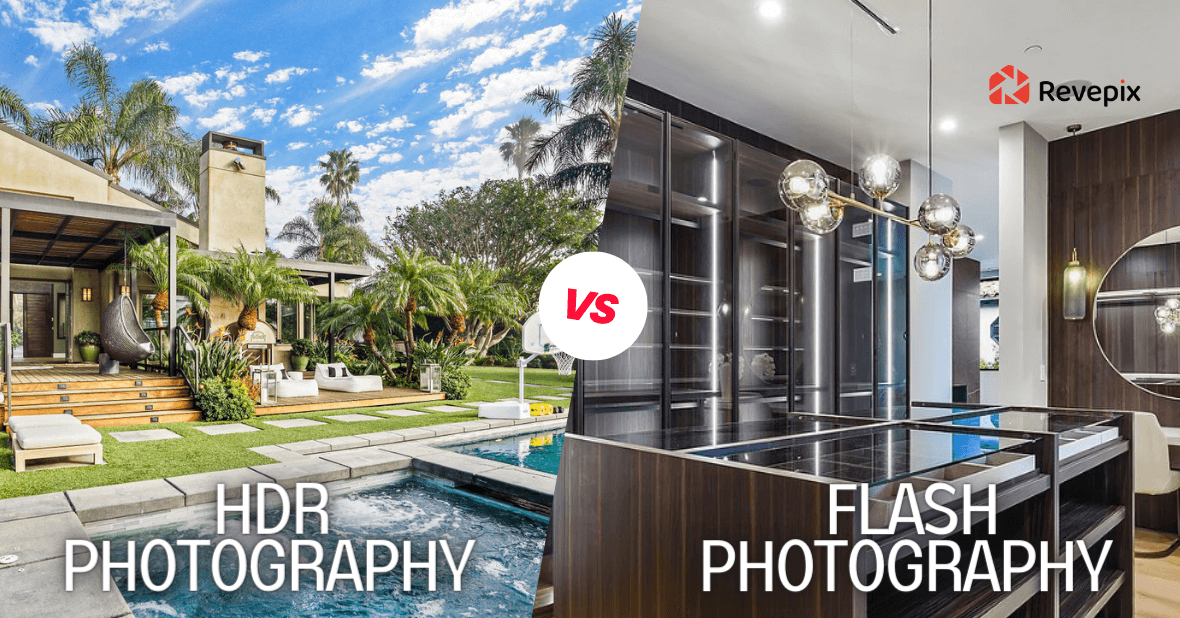People interested in real estate photography must have come across two popular ways of shooting property features: HDR and Flash flight. Both are capable of creating quality pictures but also have different processes. As a real estate photography professional, here is an article from me comparing HDR vs Flash photography, the two most prominent practices in real estate photography.
HDR and flash photography are two big players in the real estate photography industry right now. HDR photography blends together a set of pictures of different brightness and ultimately makes one complete image. It’s budget-friendly, but takes work to get good at. Meanwhile, Flash photography costs more upfront because you need tools and software, and also have to keep the flashlight on to make those super bold, high-contrast shots.
Page Contents
What is HDR Photography in Real Estate?

Have you seen those pictures where you can see the blue sky and fluffy clouds behind a crisp, clear shot of a house or building? That’s the kind of thing we do with our Real Estate HDR Photography at Revepix. We use HDR to take multiple shots with different light levels and merge them into one super detailed image. That’s why so many real estate companies choose HDR when they want to show off their properties images on online platforms.
The process requires capturing multiple pictures and compiling them one over the other. The compiled images are edited using software, and the produced image shows a variety of brightness and color information, allowing shiny visible reflection to the background and property interiors. HDR image’s final output is rated highly because of its realistic view. HDR photography has already made its mark as of the essence in real estate because of its ability to show complete, accurate, and compelling property pictures. While most photography is heavily hindered by unfavorable light or weather conditions, HDR instead uses such circumstances to create amazing real estate imagery.
When you see the final product, it’s like you’re looking at the real thing – it’s amazing! That’s why HDR is so popular in the real estate industry. Even if the light or weather isn’t great, we can still create stunning images. And if you’re a photographer looking to get better at HDR, we’ve got a helpful article with tips to help you out.
Advantages of Using HDR for Real Estate Photography
HDR photos are really popular when it comes to real estate. The compelling pictures give you all the warm fuzzy feels. But what’s so great about HDR? Well, let me tell you all about it:
- Details and enhancements: HDR photos are compiled using different pictures of varying light conditions. The gradual process eventually produces a single image with all the minor and major details, whether a darker or lighter shade.
- More accurate representation: HDR photos are like viewing reality in pictures. This is another reason why HDR photos are so famous. Their ability to produce images that have more accurate and realistic replication of the site makes it a crucial aspect of real estate photography. HDR images give a real-life feeling to potential buyers.
- Better exposure: By combining multiple images taken at different exposures, HDR can create a well-exposed image with detail in bright and dark areas.
- Enhanced color: HDR photos resemble the colors in detail. The enhanced colors makes the picture more vibrant and compelling for onlookers.
- Improved presentation: The major reason why most firms opt for HDR images is because of its conversion rate. HDR real estate photos not only replicate a realistic image of the property, it further enhances and makes it visually stunning. It has a proven record of persuasion and attractiveness, ultimately closing more sales.
Disadvantages of Using HDR for Real Estate Photography
While HDR photos are generally seen as a valuable tool in real estate photography, there are a few situations where they can actually be a hindrance. For example, if a property has a lot of reflective surfaces, like mirrors, the HDR process can make them look overexposed or distorted. Similarly, if the property has strong and bold colors, the HDR process can make them look artificial or too exaggerated. Here are a few instances where HDR photography are disadvantageous:
- It takes more time to edit: HDR photos cannot be created with normal practices. The process involves carefully compiling and editing the different pictures used for compilation. Therefore, the process it takes to produce a final HDR photograph takes more time and effort.
- Looks artificial if not done properly: With HDR photography, we suggest practicing and taking more expert guidance because the photos either go too good or too bad; there are no in-betweens.The overprocessed images can easily be noticed and the HDR photos can look unnatural if the process lacks carefulness.
- Additional cost and skills requirements: HDR photos are only possible with proper equipment and skills. Not having these resources and technicality will again produce incomplete or over processed images that can be easily visible. So the best HDR photos need additional tools like a tripod and editing software. It further requires skill sets to execute the editing process.
- Storage space: HDR images’ file format and space are usually larger than normal images. It can take up more storage space while simultaneously slowing down the processing time.
- Overusing side effects: One reason photographers must remember is that overdoing some edits might destroy the whole image. Overused HDR pictures can instantly be recognized, and they can leave an immediate negative impression on prospective buyers.
What about Flash Photography in Real Estate?

Flash photography is another well-known technique in the real estate photography industry. The technique uses a flashlight to brighten up the scene in low-light circumstances or when extra light is needed to provide better visibility to the focal object. Most cameras have an in-built feature of flashlights, but most professional photographers use an external flashlight for the desired result.
Flash photography practices are already famous in real estate photography. It produces bright and well-lit images of the property architecture. Mostly the method is used to capture shots of property interiors where natural lights are dim. Photographers use a flash and balance the light inside a room, providing bright lights to interior spaces, which usually are darker with little natural light. It ultimately produces a complete, compelling property picture with all the details of its darker areas. However, it is not just limited to low-light conditions. By using flash, photographers also manage high-contrasted scenarios and use it to balance the light conditions evenly.
Flash photography is an important tool for creating bright images of real estate properties. It helps balance the overall light structure of a scene and helps produce a complete, accurate picture.
Advantages of Using Flash for Real Estate Photography
Real Estate photography is one interesting field for photographers to experiment with and experience amazing trickery. The competitive industry can support newer ideas as firms seek top-notch photos to replicate their property listings. The challenge keeps rising with the industry standards. Flash photography is one such useful tool that has seen an increase in demand, thanks to the real estate industry. Besides real estate photography, here are some benefits of using flash for real estate photography:
- Adds brightness to low-light areas: The primary usage of flash photography is the increased brightness it provides to areas with low light. Its ability to light up spaces and create an evenly balanced final picture makes it essential in real estate photography.
- Enhances the the color: The additional light provided by the flash helps the picture show better light and detail of the space. It gives an accurate replication of the property.
- Reduced Shadows: Flash can also decrease the extent of dark shadows and create an evenly balanced scene. It gives an appealing touch to the property’s interior images.
- Highlighting key features: Another ideal use of flash is in focalising the light on specific parts of the room. Flash is useful in highlighting a property’s key features, like fancy architectural brilliance, which can give an added show to the property listings.
- Greater control: Flash can be used to highlight any area of the room, according to the situation. It gives photographers control over which portion of the room they want in the spotlight. This manual ability to highlight any selected area gives photographers freedom and flexibility.
Disadvantages of Using Flash for Real Estate Photography
Flash photography is a useful tool, especially for the real estate industry. Their ability to provide extra light on property features makes it a beneficial tool for most photography practices. But it does come with some drawbacks if not executed properly, some of which are:
- Unnatural-looking images: Using flash requires sharp precision and various other considerations. Not having so can instead increase the imbalance of light in the images. Some areas might look dull, some overly bright.
- Unnatural shiny reflections: A big problem for most flash users is that it reflects off shiny objects like glass, metal, polished surfaces, etc. Pictures with such unnatural shining reflections immediately affect the impression of viewers negatively.
- Additional equipment and time: While most modern cameras are equipped with flash, professional photography often requires additional flashlights to focus on specific areas precisely. Setting up these additional tools, like flash unit, stand, remote trigger, etc., require additional time.
- Imbalanced lighting: Flashlights have their limitations. Photographers should understand the range and scope provided by the flash and whether it is sufficient for their objective. Failing to do so might instead create uneven light structures.
- Disturbance to occupants: Occupants on the receiving end of constant flashlights shining on the during the shoot might find it annoying. Flash photography might require flashlights to be used fo a long time.
Conclusion
The real estate industry is competitive, and its online platforms demand quality property pictures.
HDR photos are all about gathering differently exposed pictures of the same thing and then putting them all together to create one complete picture. Meanwhile, flash photography makes dark parts of the property visible by adding light to them. Although HDR is good, it needs a lot of skill to make sure the picture looks natural, and flash photography is great for getting sharp and colorful images, but it can make reflections and shadows. Ultimately, the choice depends on the situation at hand.
Take a look at the photography magic that happens at Revepix and decide for yourself.
Call (818) 350-3809 or book a season today to enquire about our expert real estate photography services.



